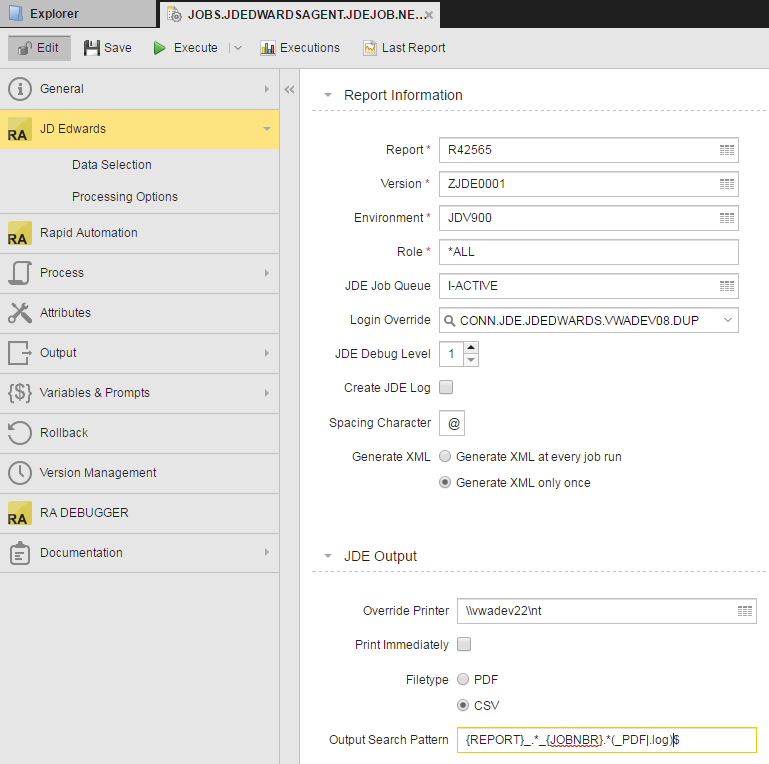
A sample JD Edwards UBEXML job
Create JDE jobs to run UBEXML jobs. JDE jobs include a JD Edwards page where you can enter report and output information. There are additional sub-pages for data selections and processing options.
Create JDE jobs to run UBEXML jobs. JDE jobs include a JD Edwards page where you can enter report and output information. There are additional sub-pages for data selections and processing options.

A sample JD Edwards UBEXML job
Specifying Report Information and Output Settings
Report information and output settings are described in the table below.
| Field | Description |
|---|---|
|
Report |
The report name to run from JD Edwards. You can use the select icon to select the JD Edwards report. |
|
Version |
The report version from JD Edwards. You can use the select icon to select the JD Edwards report version. |
|
Environment |
The environment from JD Edwards. You can use the select icon to select the JD Edwards report. |
|
Role |
Type or select a role from JD Edwards. The default is *ALL. |
|
JDE Job Queue |
A Job Queue from JD Edwards. You can use the select icon to select the JD Edwards Job Queue. |
|
Login Override |
Optionally override the connection object defined in the agent definition. |
|
JDE Debug Level |
Sets the JD Edwards debug level from 1-6. |
|
Create JDE Log |
Determines whether JD Edwards should create a log. |
| Space Character |
Allows you to define a character to replace with a space in Override Value column in the Data Selections table. |
| Generating XML |
Allows you to determine how often the XML is generated:
|
|
Override Printer |
Allows you to override the printer. You can use the select icon to select the JD Edwards printer. |
|
Print Immediate |
Tells JD Edwards to print immediately. |
|
Filetype |
Allows you to determine the output file type:
|
|
Allows you to define what JD Edwards output gets registered with the Automation Engine. For more information on this feature, see topic Registering Output Files. |
Updating Data Selections and Processing Options
To update the data selections and processing options for the job, click the Import Report Data button. For more information on data selections, see topic Editing Data Selections. For more information on processing options, see topic Editing Processing Options.